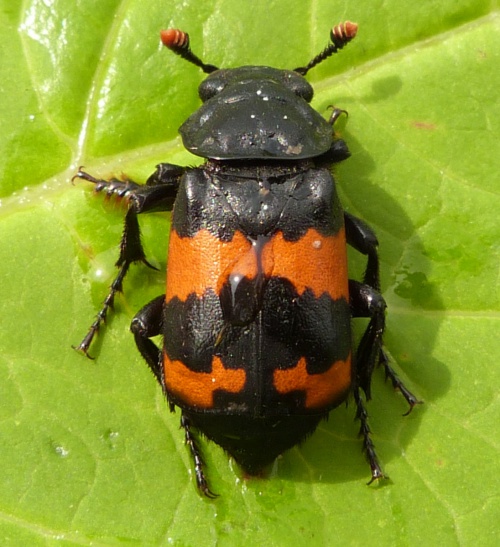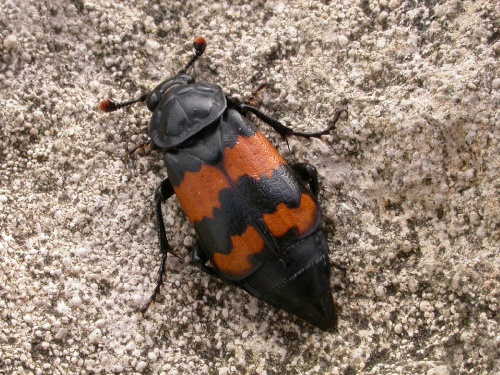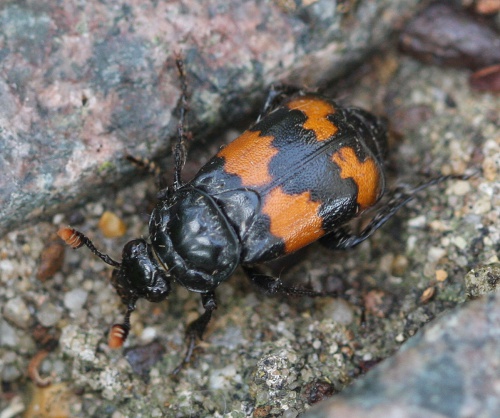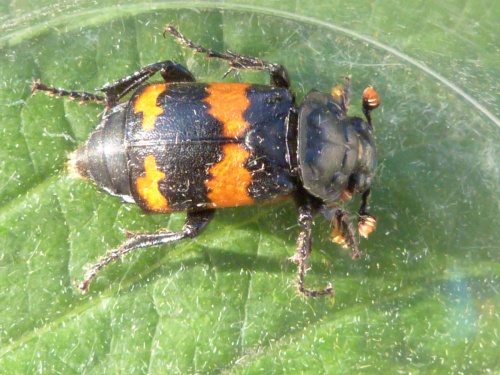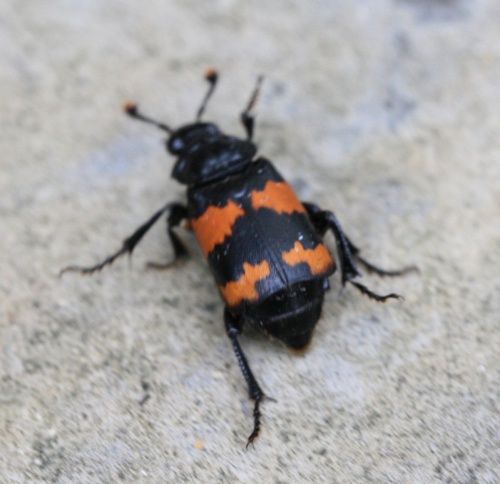Nicrophorus investigator
This Sexton, at 26 mm, is somewhat larger than the Common Sexton Beetle (N. Vespilloides). This species has dark reddish tips to its antennae. Other identifying features include the absence of hairs on the thorax and straight tibias on the hind legs. It has three abdominal segments protruding beyond the elytra. Only the posterior orange band is broken on the mid line where the elytra join in this species.
Various habitats as it is drawn into to movement by the scent of meals as they become available.
Mainly seen in spring and summer when they are attracted to light.
They are scavengers, living off and breeding in rotten carcasses. They have a very good sense of smell and are reputed to be able to smell a carcass up to two miles away.
Widespread and fairly frequent in Britain
Fairly common in Leicestershire and Rutland. There were a total of 46 VC55 records for this species up to March 2015.
Leicestershire & Rutland Map
Enter a town or village to see local records
MAP KEY:
Yellow squares = NBN records (all known data)
Coloured circles = NatureSpot records: 2020+ | 2015-2019 | pre-2015
UK Map
Species profile
- Species group:
- Beetles
- Kingdom:
- Animalia
- Order:
- Coleoptera
- Family:
- Silphidae
- Records on NatureSpot:
- 62
- First record:
- 06/08/2010 (Calow, Graham)
- Last record:
- 19/08/2023 (Poole, Adam)
Total records by month
% of records within its species group
10km squares with records
The latest images and records displayed below include those awaiting verification checks so we cannot guarantee that every identification is correct. Once accepted, the record displays a green tick.
In the Latest Records section, click on the header to sort A-Z, and again to sort Z-A. Use the header boxes to filter the list.


